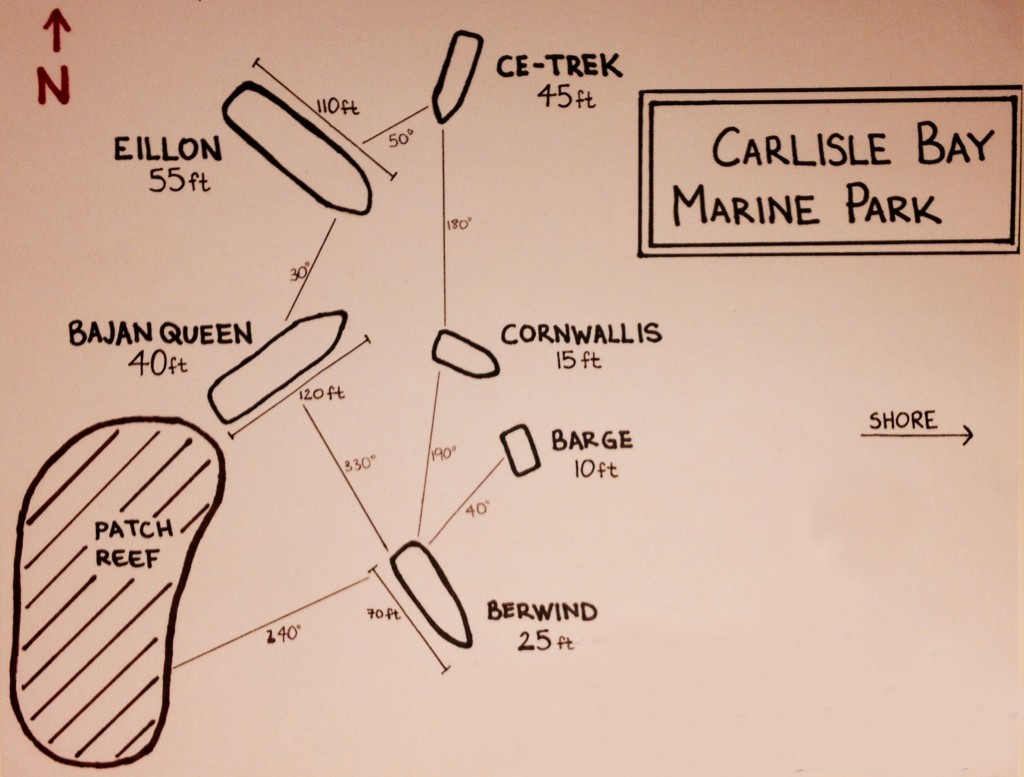Welcome to our latest blog based on diving. This separate series from our Plastic in the Pacific Crusade blog will focus on diving destinations we visit as we travel mainly through the South Pacific islands, however this one is based in Barbados as part of our delivery towards our Pacific Crusade.
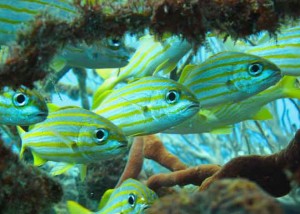 The Island of Barbados is the most easterly in the Caribbean chain of islands (Lesser Antilles). Its splendid isolated location is at Latitude 13 10 N and Longitude 59 32 W. Measuring 23km (14 miles) at its widest point, 34km (21 miles) long and a mere area of 430 square km (166 sq miles). The highest point is 1,100ft (336m) above sea level at Mount Hillaby in St Andrew and the lowest is the Atlantic Ocean (0 m). The population is approximately 281,946 and growing.
The Island of Barbados is the most easterly in the Caribbean chain of islands (Lesser Antilles). Its splendid isolated location is at Latitude 13 10 N and Longitude 59 32 W. Measuring 23km (14 miles) at its widest point, 34km (21 miles) long and a mere area of 430 square km (166 sq miles). The highest point is 1,100ft (336m) above sea level at Mount Hillaby in St Andrew and the lowest is the Atlantic Ocean (0 m). The population is approximately 281,946 and growing.
Relatively flat compared to its volcanic neighbours, Barbados is one of the few coral capped limestone islands in the region. The fact that the island is made up of over 85% coral limestone, about 20 – 30m thick and underlain by sedimentary rock means that most of its surface water runs off underground. The limestone rocks act as a filter for the underground water so when the water passes through these rocks, it is filtered. This is the main reason why the water in Barbados is of such a high quality.
Bridgetown Barbados was our first stop having crossed the Atlantic on our 43ft Yacht. We had anchored in Carlisle Bay which is on the south-western side of the island. The first thing you will notice about Barbados is the beaches are very white, which gives the clear waters that exotic azure color you see in magazines and travel brochures. Combined with the lush vegetation, courtesy of the end of wet/hurricane season, the place was very easy on the eye.
Research done prior to arriving in Barbados showed ample dive sites up and down the west coast however we would be hampered by a northerly swell that meant we didn’t get to a lot of the popular spots that the locals rave about. But despite this, we would leave Barbados with some amazing dives that you just wouldn’t expect, given the location and the amount of tourists that frequent the spots we did get to dive.
 Hundreds of cruise ships will visit Barbados every year. We arrived at the start of the cruise season and there were only a handful that appeared whilst we were there, however customs showed me the schedule for the next three months when up to 4 cruise ships would visit in one day. So imagine 5,000 – 8,000 people lobbing on the doorstep of Bridgetown in one day with the majority wanting to visit arguably the biggest tourist attraction, which is to go and snorkel/dive with the turtles and wrecks in Carlisle Bay. Yes that’s right, straight off the main beach that we were anchored in, there are lots of turtles and 6 wrecks that are in waters of just 7-17m, all positioned close enough that you can cover them in one dive if you desire.
Hundreds of cruise ships will visit Barbados every year. We arrived at the start of the cruise season and there were only a handful that appeared whilst we were there, however customs showed me the schedule for the next three months when up to 4 cruise ships would visit in one day. So imagine 5,000 – 8,000 people lobbing on the doorstep of Bridgetown in one day with the majority wanting to visit arguably the biggest tourist attraction, which is to go and snorkel/dive with the turtles and wrecks in Carlisle Bay. Yes that’s right, straight off the main beach that we were anchored in, there are lots of turtles and 6 wrecks that are in waters of just 7-17m, all positioned close enough that you can cover them in one dive if you desire.
These wrecks are in a small section lined with buoys each side so no yacht will anchor in the area. The top of some of the wrecks are less than 2 meters so easy for the snorkeler, and for most divers you would think that the shallow dive would be boring. Cast your doubts aside as these dive wrecks are some of the best diving you will find in the Caribbean.
There are 6 wrecks in total in the area:
- The Berwind is a 70ft long world war French tug that was sunk in 1919.
- The Eillon is a 110ft freighter sunk on the 8th June, 1996 to form part of Carlisle Bay Marine Park. The ship was a former drug boat, and was tied up for 6 years. The wreck is easily accessible for penetration
- The Ce-trek is a derelict boat constructed of cement and was sunk in January????????.
- The Bajan Queen was Barbados ‘ first tug boat ‘Pelican’ when the Bridgetown Harbor was being constructed in the 1960’s. One decade later, as more modern tugboats were purchased; the Bajan Queen was converted into a ‘Party Boat’ which holds many memories for thousands of Barbadians. She was sunk on 19th May, 2002 .
- The Corn Wallis is a Canadian freighter sunk by a torpedo from a German U-boat during World War II. This wreck was relocated to this Marine Reserve on 22 October 2000 because it was lying in a high traffic area and was suffering anchor damage.
- And finally there is a Naval Landing Barge
In addition to the wrecks there are various anchors, engine blocks and other debris littered around the dive site that has attracted lots of growth and marine life. Whilst the wrecks were stunning, it was because of the marine life in the region that we simply loved this dive location. Shallow water is great for two things, great light and long dives. Over the week we would visit the site on numerous occasions and found something new every time. Quite simply the quantity of marine life and varied species makes it a dream for photographers and perfect for all levels of diver. Whilst we didn’t do one, it would be an amazing place for a night dive too.
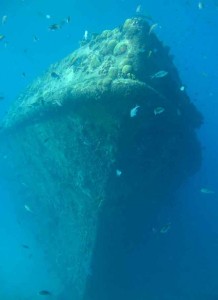 The Bajan Queen was our favorite of all the wrecks. Due to its conversion to a party boat, the sides of the deck cabin were converted into lots of toilets and the aft deck had seating around it. The toilet compartments always make for great photos. You could swim in through the aft deck area which had been opened up quite large, down into the engine room, into the forward compartment and then head up the steps into the wheelhouse. The engine room was huge with two large engines and lots of the original pumps and equipment are still in place. The amount of fish swimming around the front deck where the large anchor windlass was, made for an epic location and you could sit and watch for hours if you had the time.
The Bajan Queen was our favorite of all the wrecks. Due to its conversion to a party boat, the sides of the deck cabin were converted into lots of toilets and the aft deck had seating around it. The toilet compartments always make for great photos. You could swim in through the aft deck area which had been opened up quite large, down into the engine room, into the forward compartment and then head up the steps into the wheelhouse. The engine room was huge with two large engines and lots of the original pumps and equipment are still in place. The amount of fish swimming around the front deck where the large anchor windlass was, made for an epic location and you could sit and watch for hours if you had the time.
Around the two large propellers and rudders swam massive schools of Spanish flag stripey snappers and soldier fish. The vivid red of the soldier fish with their large black eyes stood out as the shallow depths still allowed the reds to show. The bright yellows of the stripeys were the perfect contrast with the coral covered hull containing an amazing variety of marine growth considering how young it is as a dive wreck. On the starboard aft side rRight side of the hull towards the back), we found a small moray eel who at times would be found swimming along the hull searching for its next hole to hide in. He was a spotted moray and about 1 meter long. There were plenty of Christmas tree (tube) and fan worms, small brain corals and juvenile gorgonian fans.
All over the wrecks and on the sand flats we found boxer shrimps, hermit crabs, cow fish, puffer fish and even stone fish. We also saw a flying gurnet and plenty of garden eels surrounding the wrecks. And of course to add to this we saw the obligatory turtles which frequent the area eating the sea grass that frequents the sea bed.
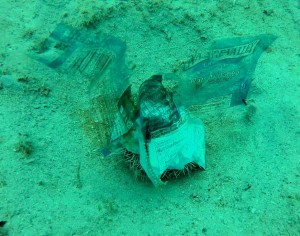 Also in abundance were sea urchins crawling all over the wreck and on the sand flats. I found one that had a unique protective layer. It had managed to coat itself in a Nature Valley Oats & Honey cereal wrapper. It is quite ironic that a company that calls itself ‘Nature Valley’ could have a product that is so destructive to nature. Not really sure what would’ve happened if we had not come along to remove the wrapper on a creature that uses it’s spines to kill its prey.
Also in abundance were sea urchins crawling all over the wreck and on the sand flats. I found one that had a unique protective layer. It had managed to coat itself in a Nature Valley Oats & Honey cereal wrapper. It is quite ironic that a company that calls itself ‘Nature Valley’ could have a product that is so destructive to nature. Not really sure what would’ve happened if we had not come along to remove the wrapper on a creature that uses it’s spines to kill its prey.
Whilst we were in Carlisle Bay, we saw a tug and barge anchor out at sea abount 2 miles. From previous experience, these barges have anchors that weight 3-5 tonne. So when we spoke to some locals and found out that a reef called shark reef had been totally destroyed with huge corals overturned and huge gouges in the reef, and they were looking for the culprit, we happily obliged with the information we had. But I had to ask why this reef wasn’t on the charts as a protected area. Our charts showed nothing and nor do any official charts. In fact our charts showed nothing of the Carlisle Bay Marine Park saying you can’t anchor there. None of these locations are actually protected in any way. It is stunning to think that a place like the marine park that creates so many tourism dollars isn’t protected. Of course it is frowned upon by locals but there is no law saying you can’t go and fish there, and I can tell you that there are some good sized meals swimming around those wrecks. It wouldn’t take a lot to protect the marine park. It is already surrounded by buoys, it is just a matter of legislation and then enforcing that legislation. Surely this can be afforded based on the tourism dollars it brings in. Let’s hope they read our letters and act accordingly as this marine park is a must to protect for generations to come.
 One of the best hints I can give you when diving wrecks is that if you want to penetrate them, then you need a good dive torch. We use the Darkbuster 12XL 1000 lumen dive torches provided by LED Dive Lights Australia. These torches are rechargeable which is essential if you want to protect the environment, yet are bright enough to light up everything in the dark interiors of these vessels which often you find night creatures sleeping during the day. Without a good torch you simply won’t see half the marine life inside the wrecks that you would normally.
One of the best hints I can give you when diving wrecks is that if you want to penetrate them, then you need a good dive torch. We use the Darkbuster 12XL 1000 lumen dive torches provided by LED Dive Lights Australia. These torches are rechargeable which is essential if you want to protect the environment, yet are bright enough to light up everything in the dark interiors of these vessels which often you find night creatures sleeping during the day. Without a good torch you simply won’t see half the marine life inside the wrecks that you would normally.
Annika is our photographer and carries a Canon G10 in an Ikelite housing with twin strobes. For her, she uses the Darkbuster LED 5R 370lms with the fitted glove so she doesn’t need to remove her hands from the housing. It is absolutely perfect and she loves it even as a primary torch. I know this sounds like a plug but when you love a product so much because it does the job it’s meant to do so well, then you just have to tell other divers about them. For the dollars you can’t do better.
There are various dive centers around Bridgetown to look after you and we won’t plug one in particular, we are about promoting the destination, not the companies that offer diving there. However all seem to have a lot of respect for the reef and good facilities so I am sure you won’t be disappointed in any of them. The main thing about Barbados you will find is that the people are ultra friendly and will do everything they can to make your holiday the best it can be. As long as you turn up with the right attitude and settle into island time, then you’ll fit right in.
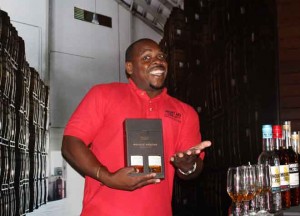 Whilst in Barbados, you have to visit the Mount Gay Rum Visitor center and have a drink at a local ‘Rum Bar’ There is a good reason these people are happy. The rums produced from the perfect drinking water, filtered by the limestone base of the island, are amongst the best in the world. After a ‘taste testing’ at Mount Gay, it’s probably not a good idea to go diving!!! If you are into kitesurfing, SUP or windsurfing then visit Brian Talma’s De Action Shop down in Silver Sands. Brian is larger than life and is very passionate about the ocean. His artwork is something to behold as he paints in vibrant colors, the images of our oceans. Getting around the island is easy with share busses that that cost BDS$2.50 (US$1.25) each way and I highly recommend taking a walk through the local streets off Carlisle Bay to see the real Barbados, not just the tourist sectors. There is so much to do on Barbados that it is a perfect destination for your adventure holiday.
Whilst in Barbados, you have to visit the Mount Gay Rum Visitor center and have a drink at a local ‘Rum Bar’ There is a good reason these people are happy. The rums produced from the perfect drinking water, filtered by the limestone base of the island, are amongst the best in the world. After a ‘taste testing’ at Mount Gay, it’s probably not a good idea to go diving!!! If you are into kitesurfing, SUP or windsurfing then visit Brian Talma’s De Action Shop down in Silver Sands. Brian is larger than life and is very passionate about the ocean. His artwork is something to behold as he paints in vibrant colors, the images of our oceans. Getting around the island is easy with share busses that that cost BDS$2.50 (US$1.25) each way and I highly recommend taking a walk through the local streets off Carlisle Bay to see the real Barbados, not just the tourist sectors. There is so much to do on Barbados that it is a perfect destination for your adventure holiday.
We can’t wait to get back to dive the other sites up the west coast that include a concrete pier with lots of sea horses, several larger wrecks and some offshore reefs with what we’re told are excellent coral life. See you there!!!
Ocean Crusaders Diving adventures are sponsored by Cressi and LED Dive Lights Australia. Without their amazing support we wouldn’t be able to capture the footage required for our online education program to educate youth of the issues our oceans are facing with regards to plastic pollution. Visit www.OceanCrusaders.org for more details on our crusades and to find additional photos from our diving adventures.
[cincopa AQLAUENminhp]
